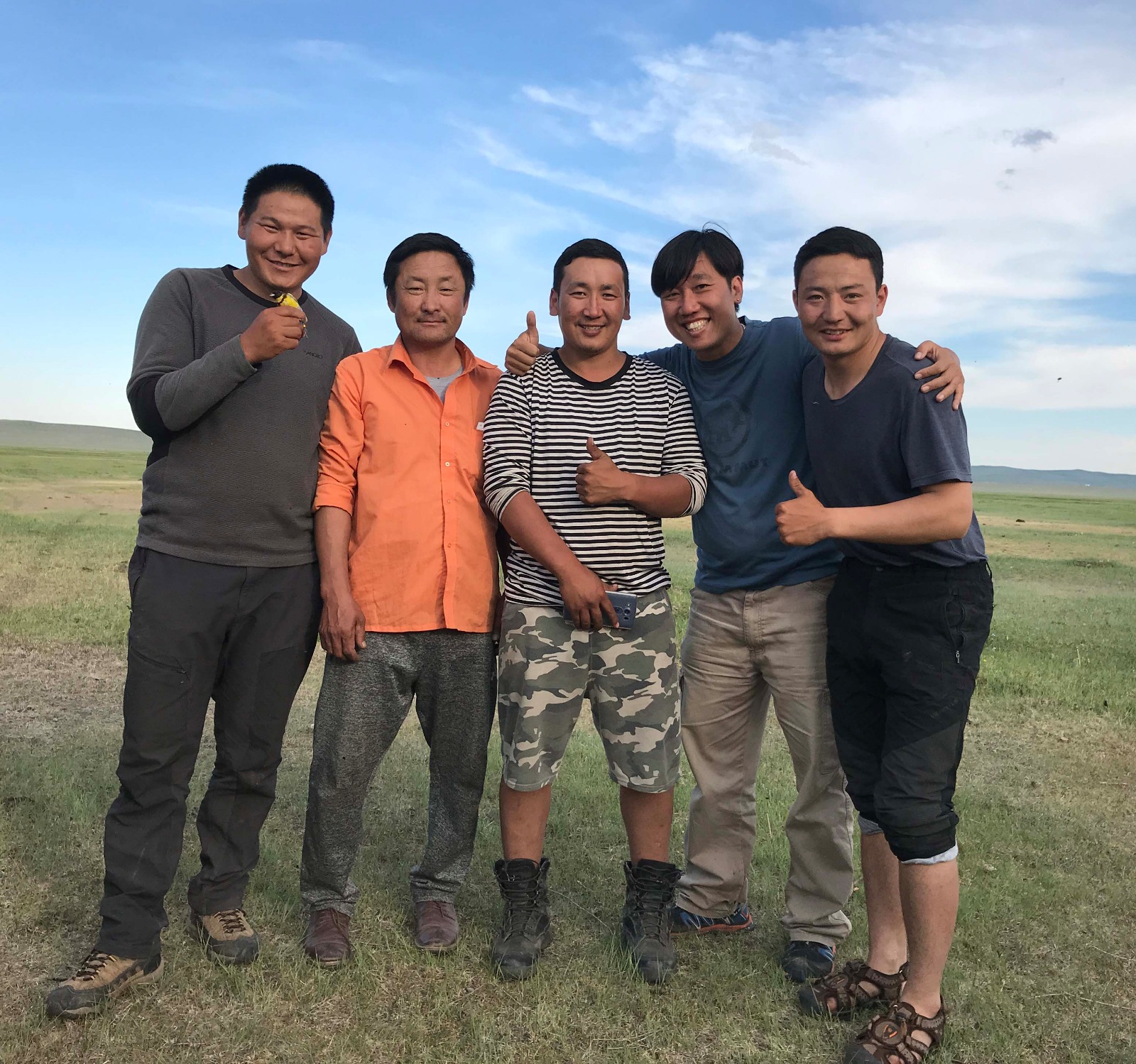Survey of breeding range and inception of tracking Critically Endangered Yellow-breasted Bunting Emeriza aurola in Mongolia
Yellow-breasted Bunting Emberiza auerola (YBB) once had a very large distribution globally, which breeds across the whole northern Palearctic. Yet, due to over-exploitation, the population dropped drastically. It was listed as Critically Endangered in IUCN Red List in 2017. Mongolia is one of the few countries still having breeding Yellow-breasted Buntings, but it was not well known and studied in Mongolia and many existing information of the species has not been updated recently. Local resources to study this species is limited.
We have conducted a breeding survey of Yellow-breasted Bunting in Khurkh Valley, Mongolia, from 7 to 16 June 2018, jointly with a team of researchers from the Wildlife Science and Conservation Center of Mongolia (WSCC). We aim to assess the abundance and habitat of the breeding YBB there and putting on small tracking devices, i.e. geolocator, on the birds in order to understand more about their migration behaviour. The team has successfully found at least 20 singing male Yellow-breasted Buntings in the Khurkh Valley and it is likely that the breeding population might well be 20 pairs in this restricted habitat. Threats to birds and the habitats are not very high, nor immediate. Ten geolocators were placed on the males, and an extra 5 females were also put on with colour bands.
We are very grateful to Yann Muzika supporting this survey. Thanks must also go to Simba Chan for all helps of organising this survey, and Wieland Heim to shares the standardised habitat form.
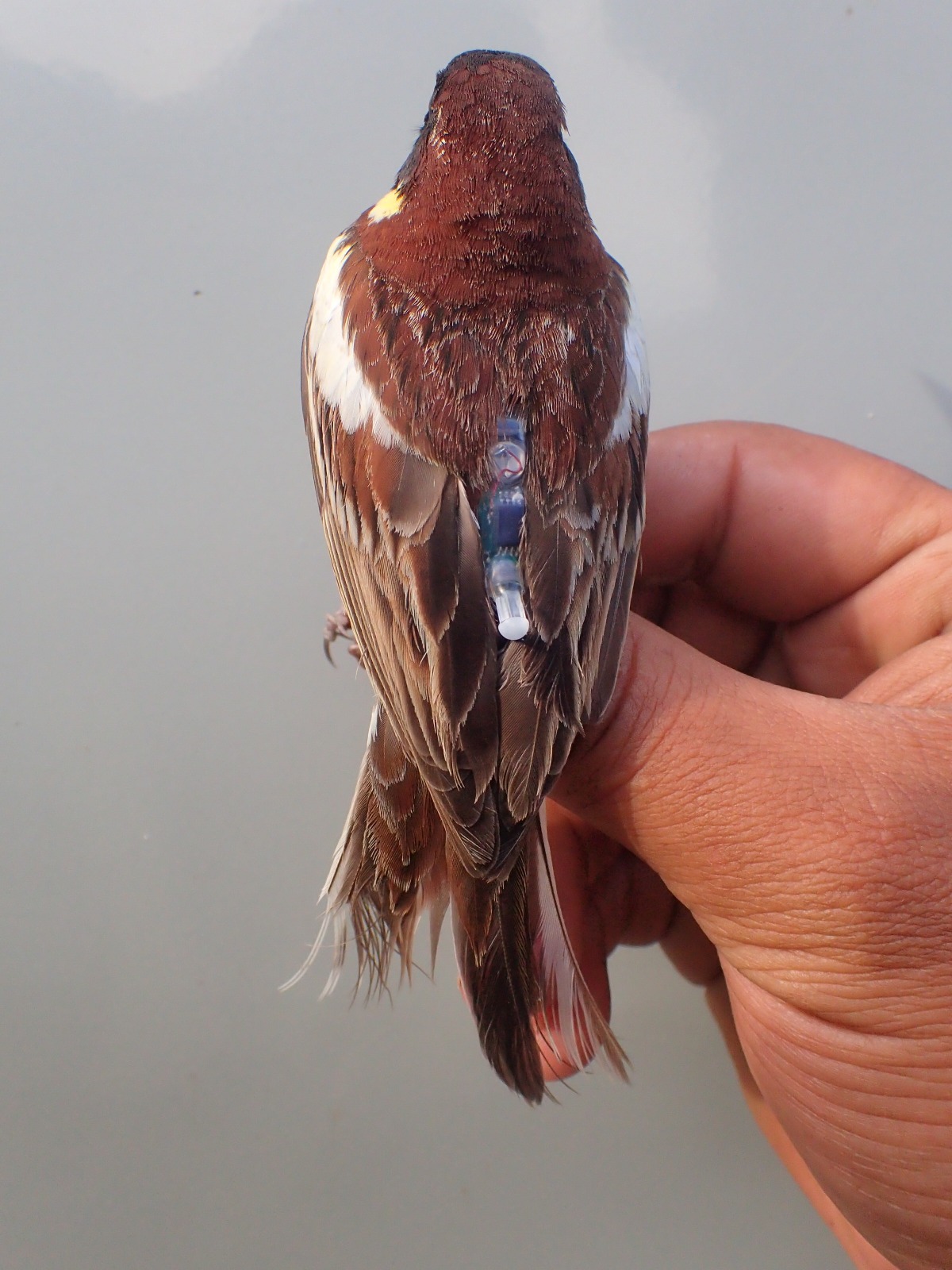
Location of Khurkh Valley, Khentii Province, Mongolia. Copyright of Google Earth.
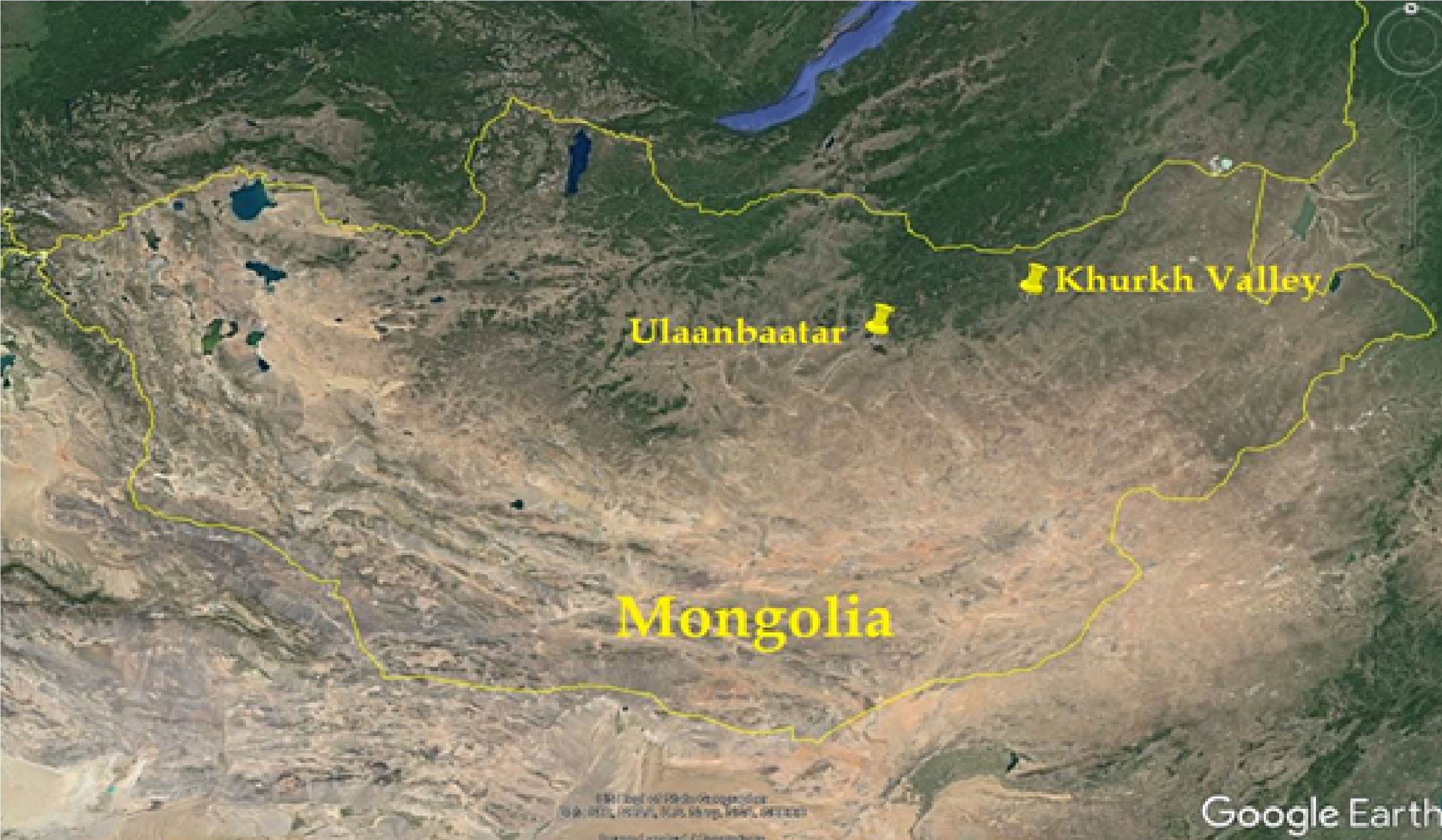
Site photo of the potential Yellow-breasted Bunting breeding site 1. Photo by Yat-tung Yu.
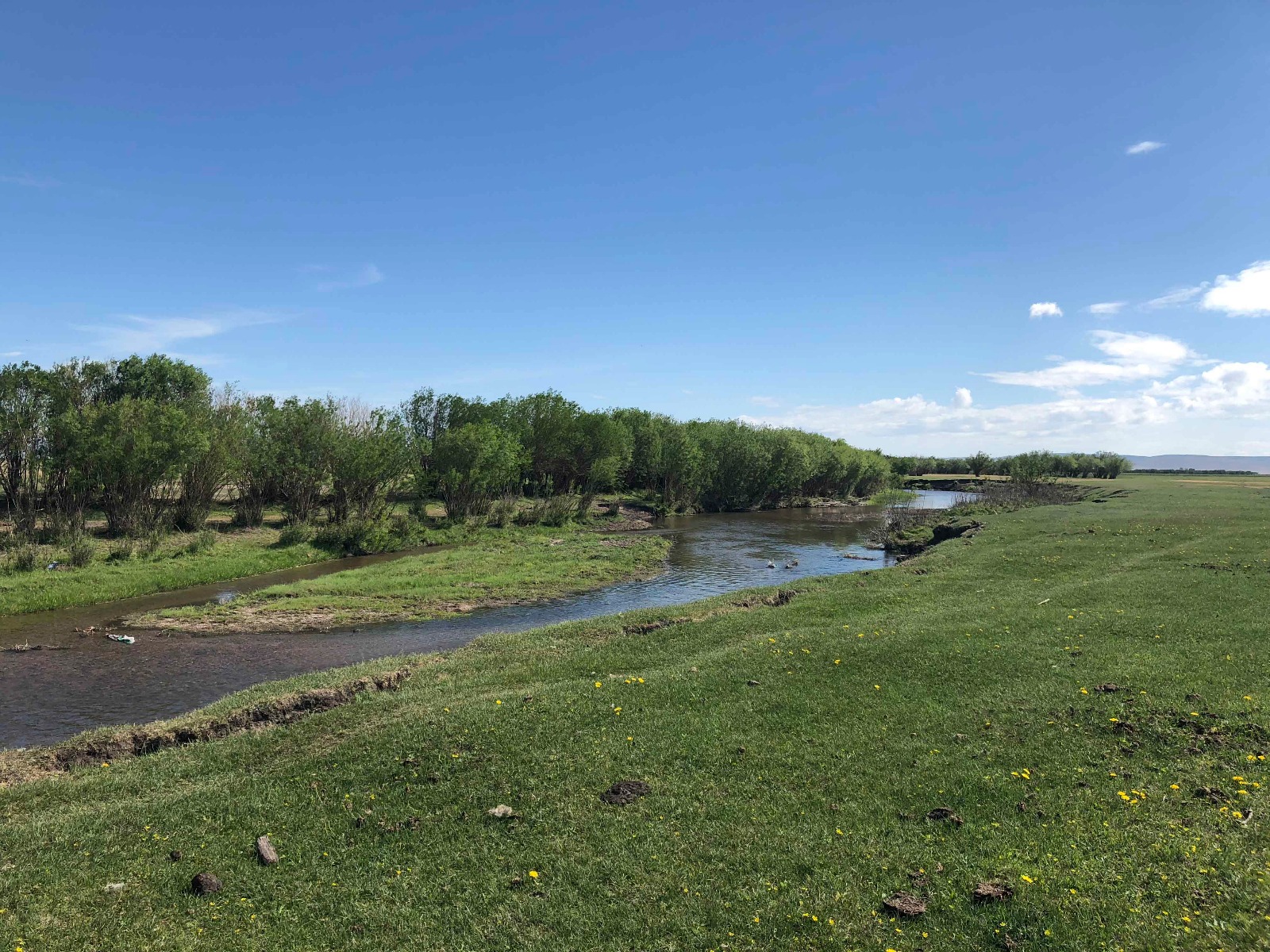
A geolocator is fitted on a male Yellow-breasted Bunting, which was also put on colour and metal rings. Photo by Yat-tung Yu.
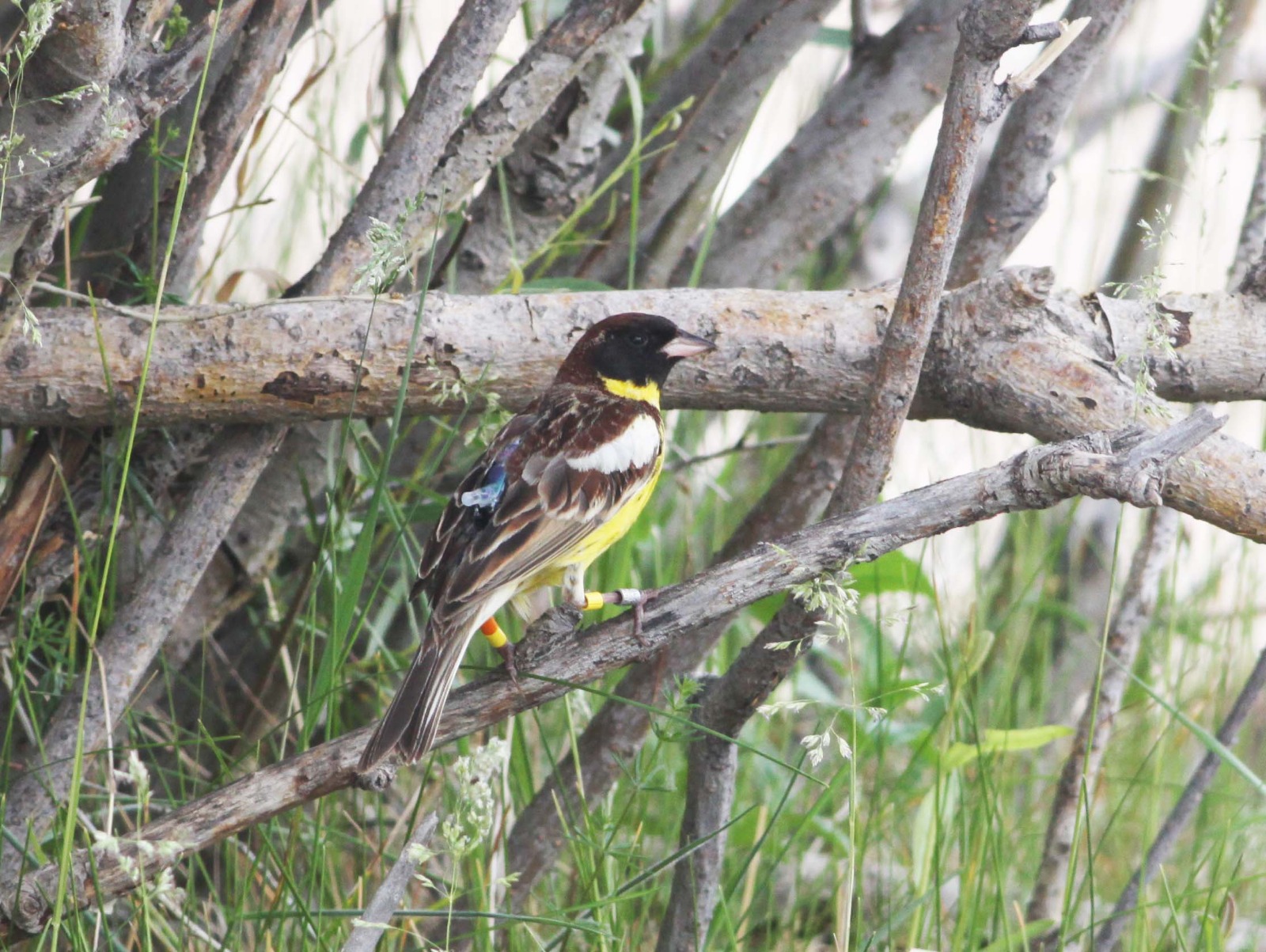
The research team, Mr Batnunkh Davaasuren (on left) and Mr Jugdernamjil Nergui (on right)
